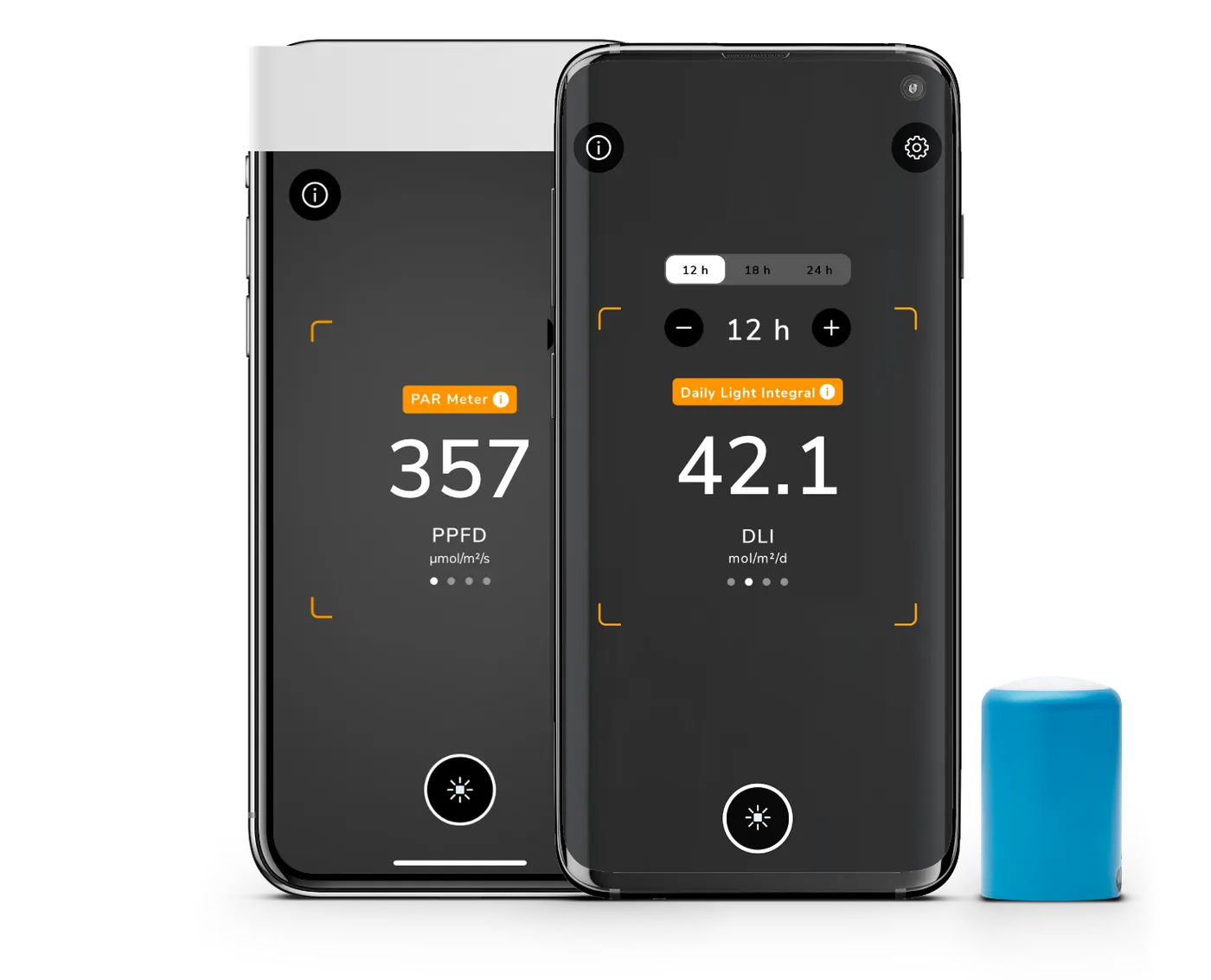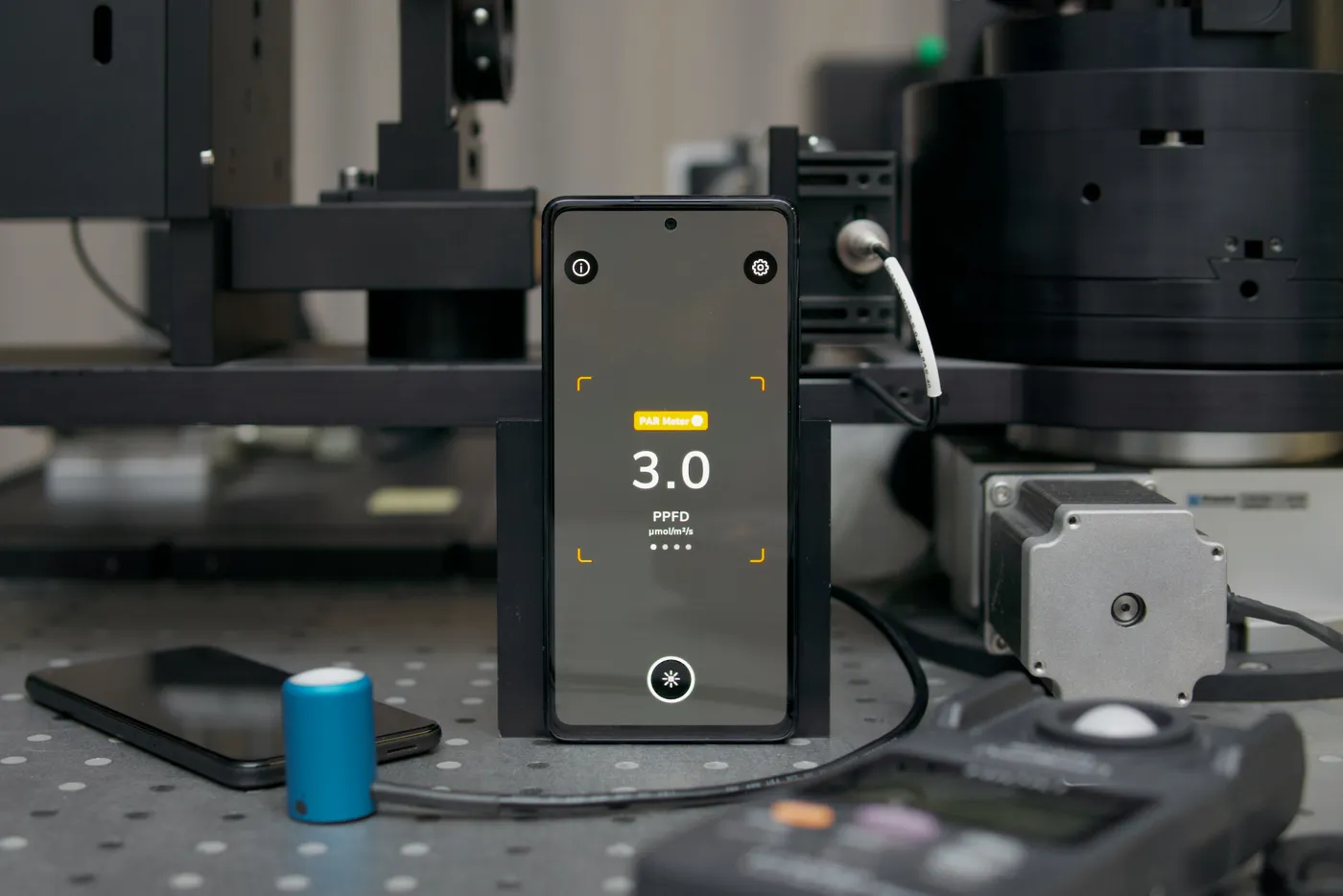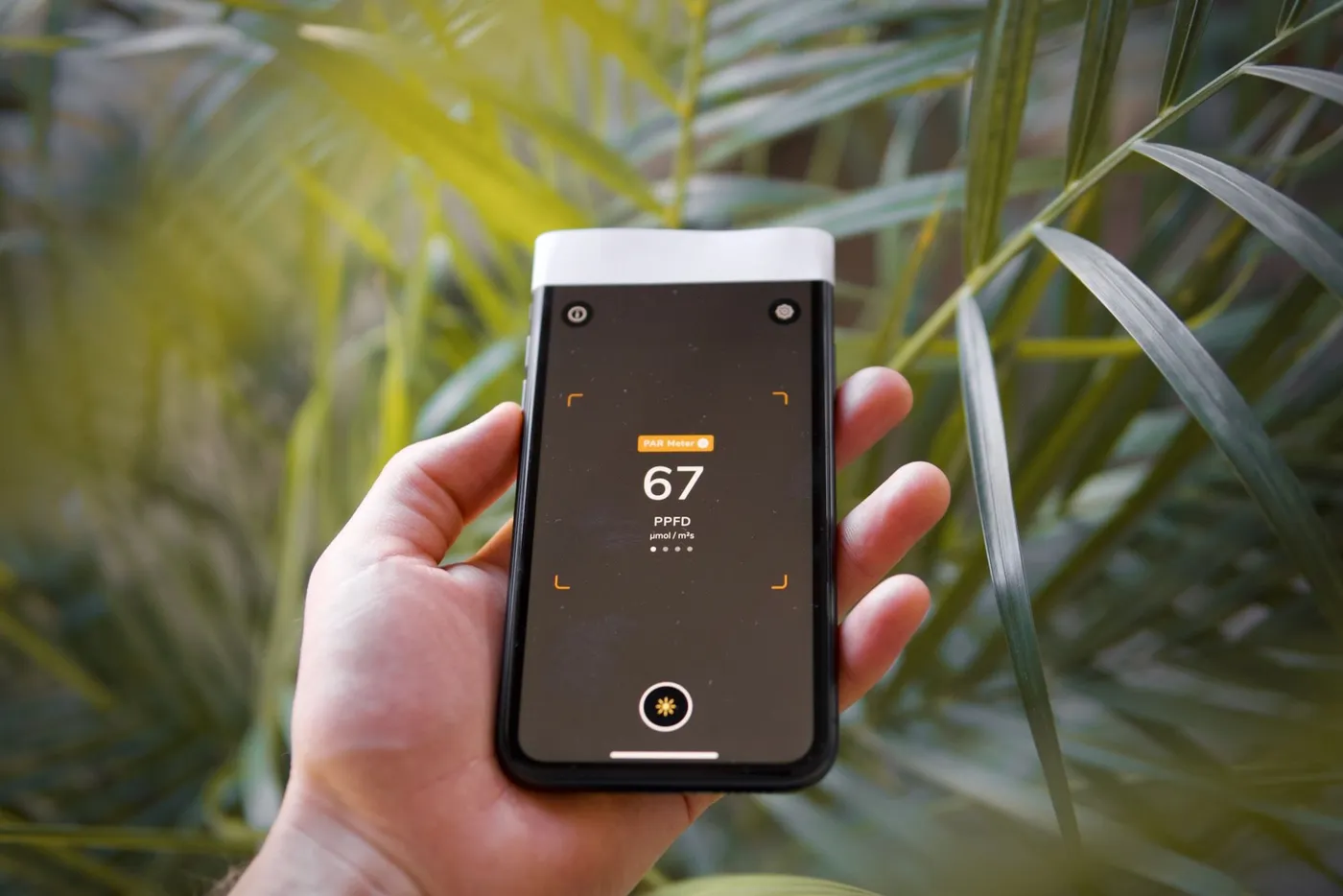
Auto-Translate
We have tested all the iOS light meter apps that claim to help you with your plant lighting. If you're looking for an Android app, check out our other article on that.
Contents
If you’re looking for a light meter for applications other than plant lighting such as photography, health, or architecture, check out the Light Meter LM-3000 for exactly that.
Requirements for a Plant Light Meter
These are the four most important aspects of a plant light meter app:
Accuracy
Obviously, a measurement device should provide accurate measurements. Measuring light accurately is very hard to achieve, so a meter with an error of ±20% can be considered as accurate enough for most applications. If you want to dig deeper into light meter accuracy, consider the ISO/CIE 19476 standard.
Linearity
The meter’s reading must be proportional (i.e. linear) to the intensity measured. This means if the light intensity doubles, the reading should be twice as much too. If a meter doesn’t measure linearly, it cannot be calibrated as the reading will always be off by a different amount.
You can easily test this yourself by taking a measurement at any distance from a light source. Then move your meter closer to the light by cutting the distance in half. The light meter’s measurement should now be four times as much due to the inverse square law.
Repeatable Measurements Among Devices
In order for a light meter to be reliable and trustworthy, it must achieve similar results among different devices. For a light meter app, this means that you should measure similar results, no matter which device you’re using. Since there are so many different smartphones out there, this is a major challenge for developers of such apps.
You can test this yourself by using the same app on different devices. The readings should be more or less equal under equal illumination.
PAR Measurement
A light meter that only measures illuminance (lux or foot-candle) isn’t suited for plants as plants “see” light differently. A plant light meter must measure photosynthetically active radiation (PAR) as PPFD in the unit of µmol/m²/s. If you don’t know why PAR is important or want to learn more, we recommend our article that covers the topic in detail.
TL;DR: Our Recommendation
Best Light Meter App For Plants: Photone Grow Light Meter
It seems that Photone is the only plant light meter app on the App Store that is measuring accurately – we are blown away by the unsuitability of all the other plant lighting apps.

Since we're the creators of Photone our result could be potentially biased. But you don't need to take our word for granted and can try it yourself. You'll find our test methods including all the results further down below. The app can be downloaded and tested for free. (unlocking all light sources requires a small purchase)
Complete Test Results
Unfortunately, all of the following apps except Photone are not recommended as they’re neither accurate nor produce repeatable measurement results across devices. Mind that only two of these apps measure PPFD, but as suggestions for converting illuminance (lux or foot-candle) to PPFD can be found online, we’ve included illuminance meter apps as well.
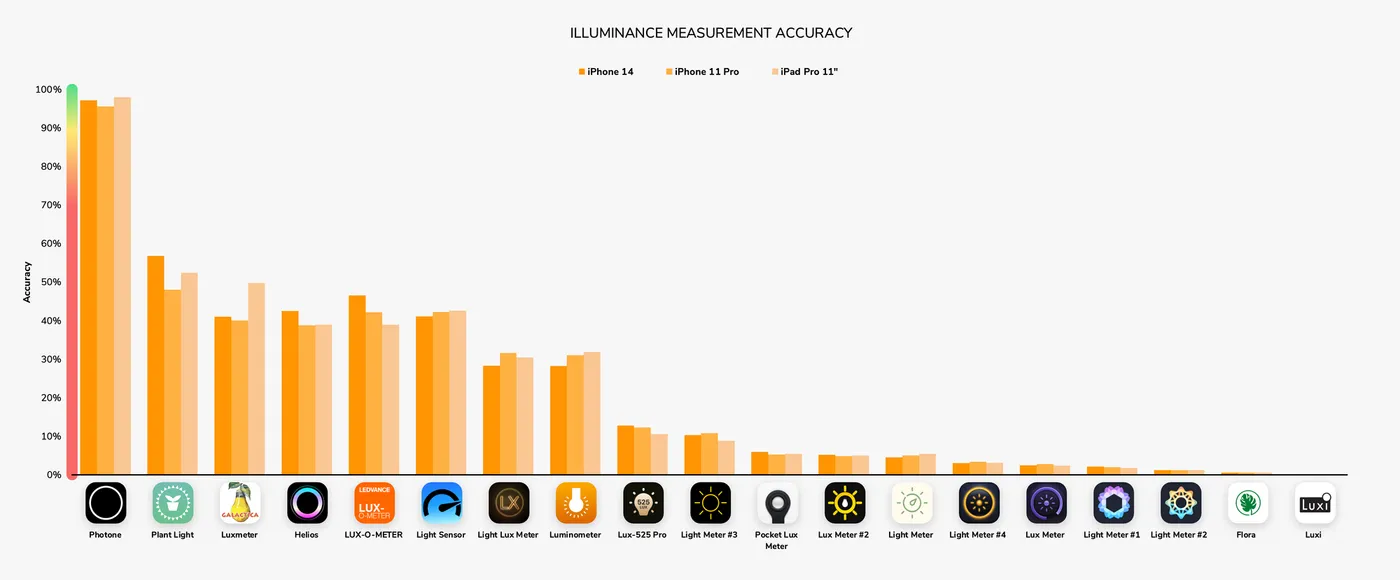
Some of these apps feel like outright scams as they’re not even close to an accurate measurement, feeling more like a random number generator. Unfortunately, this really hurts the reputation of light measurement apps.
If you find an app that isn’t shown in our comparison and that you think works well, please let us know and we take it to the test.
Measurement Procedure
To obtain objective and comparable measurement results, we set up a few real-world scenarios under real plant grow lights. We measured the apps under an entry-level Phlizon “blurple” red and blue LED, as well as a high-end full spectrum “spider” LED equipped with Samsung LM301H LEDs. Both lights are used by many home- and professional growers alike. Illuminance measurements were tested under a more generic “neutral white” 5000 K Cree COB LED. To vary the light intensity, we adjusted the height of our grow lights as you would in a typical grow environment.
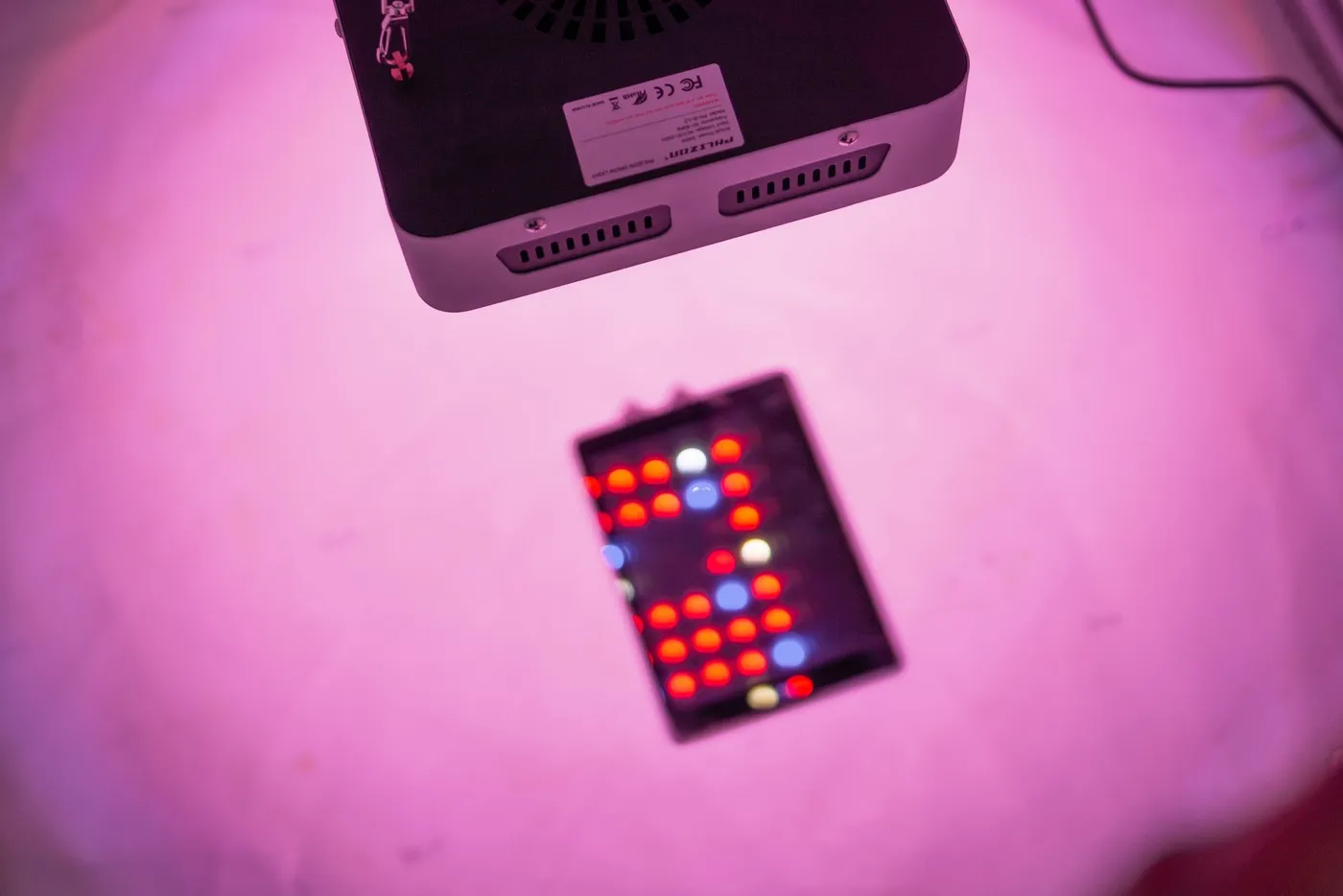
All of our measurements were compared to science-grade reference equipment. To compare PPFD measurements, we’ve used a $600 Apogee SQ-520 quantum PAR sensor. For illuminance (lux or foot-candle) measurements, we’ve used an $800 DIN 5032 Class B HIOKI FT3425 lux meter.
To analyze the overall accuracy, we compared the average measurement errors relative to our reference for each app. In order to make sure that these results are reliable and repeatable across different devices, we took measurements on an iPhone 14, an iPhone 11 Pro, and an iPad Pro. The linearity can be analyzed when comparing the relative errors at different light intensities. The more the errors differ, the higher measurement deviates from linear behavior.
Detailed Measurement Results
There are only two apps that claim to measure PPFD: Photone and Lux-525 Pro. Both were tested at various light intensities.
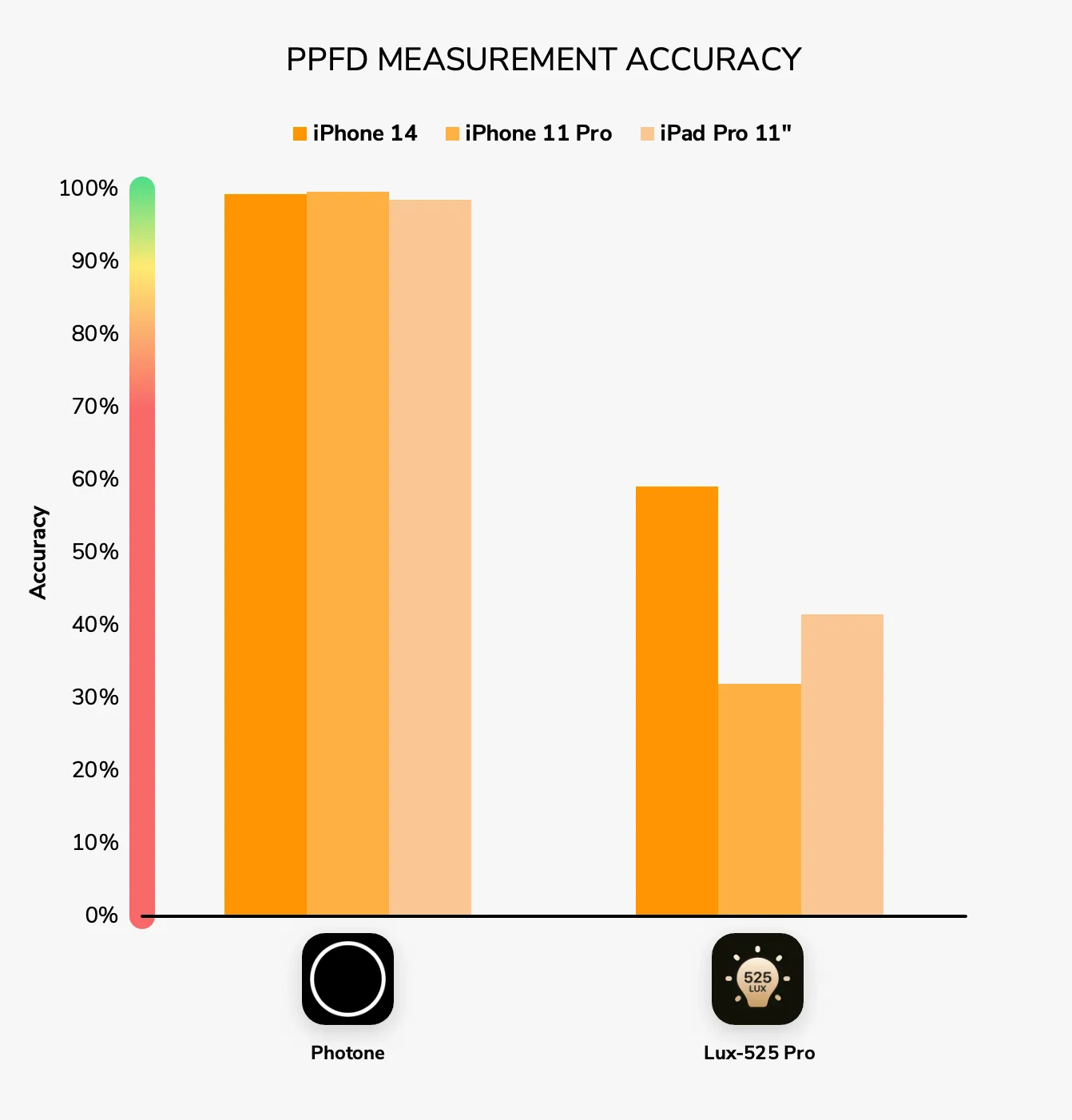
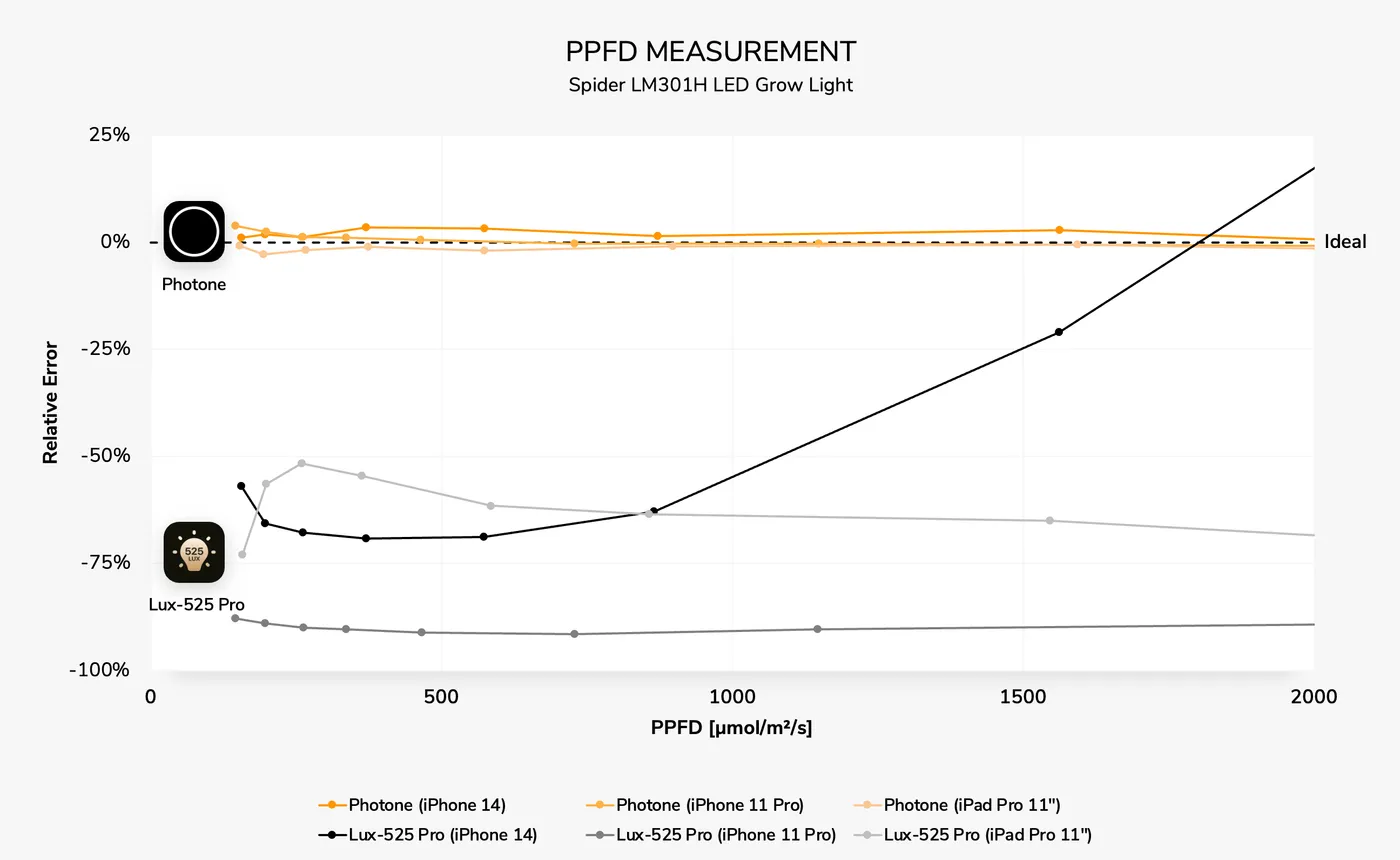
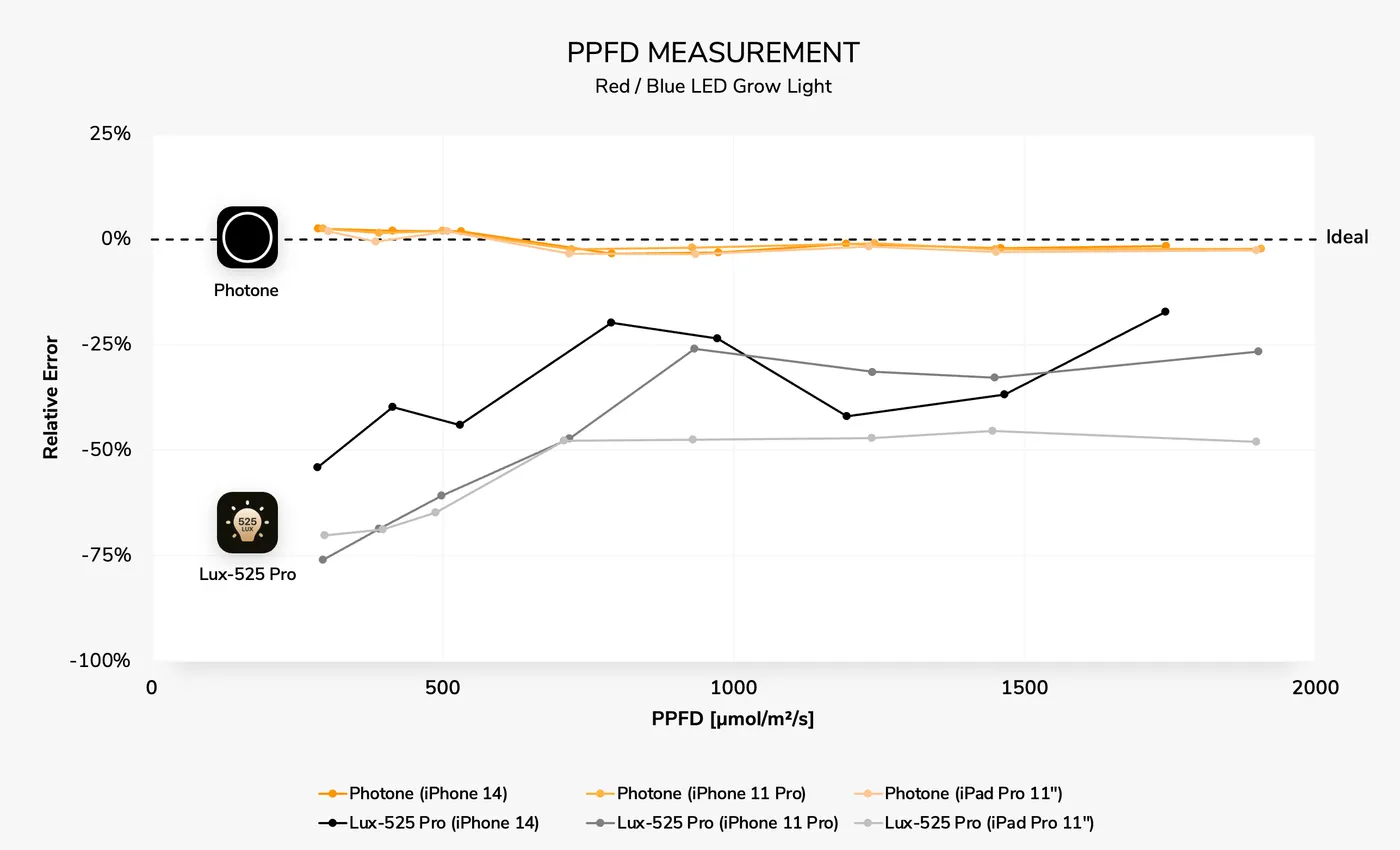
Raw Measurement Data
It’s important for us to be as transparent and objective as possible in these tests. If you want to look at the data yourself, including more information about the exact configuration and versions used, check the download of our Excel file below.
Closing Thought
The measurements above provide us with absolute confidence that the Photone Grow Light Meter is an excellent alternative to any hardware PAR/PPFD meter – especially at a $500 price difference!
Thank you for reading and happy growing!

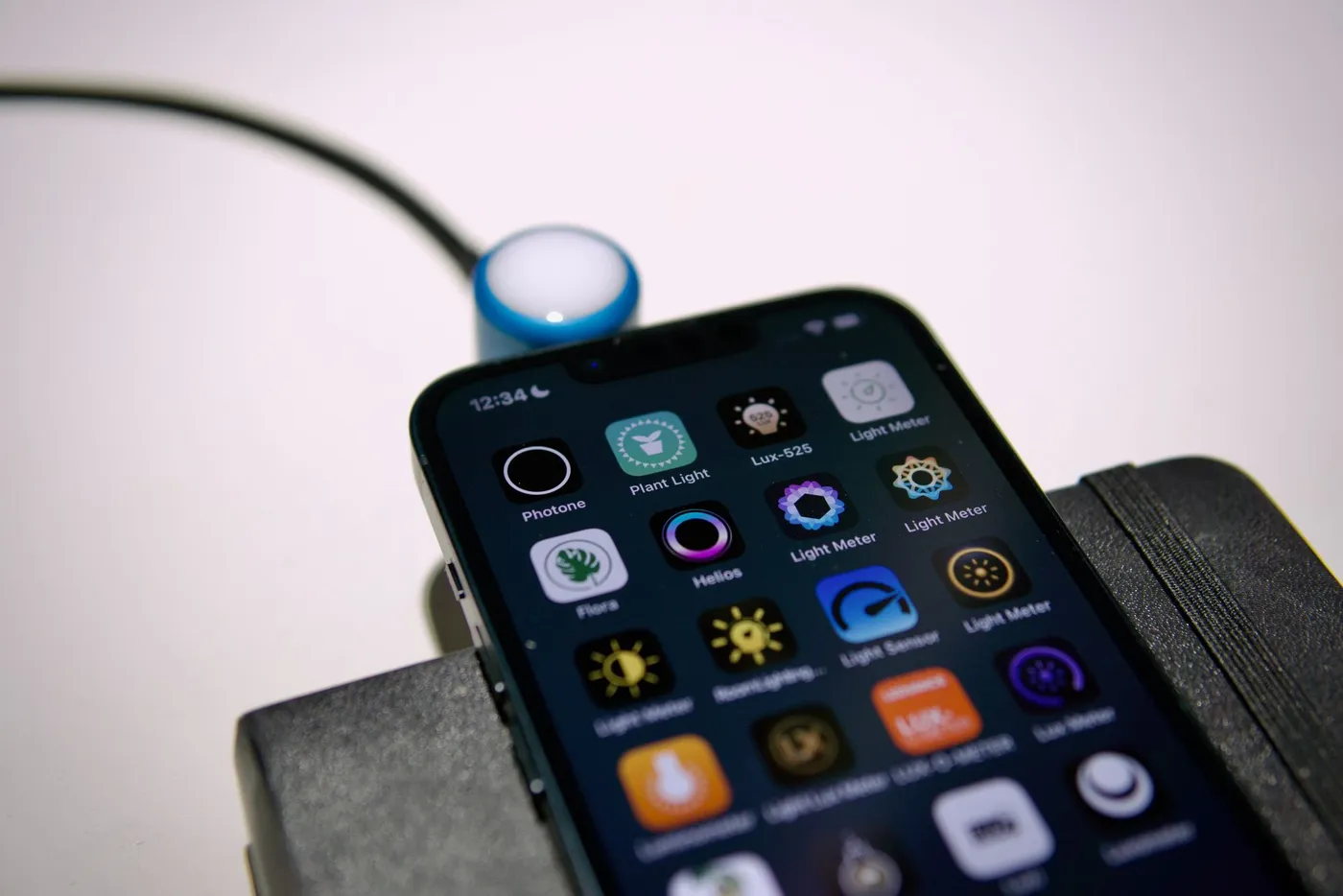
 Share This
Share This



